Nokia Lumia 830 Review
by Brett Howse on November 25, 2014 8:00 AM EST- Posted in
- Smartphones
- Microsoft
- Lumia
Camera
The Lumia 830 carries the PureView branding on the camera, which Nokia has saved for the heavy hitting cameras. As the line has evolved, the PureView brand appears to be for phones with Optical Image Stabilization (OIS), although as with any branding that may change in the future. The Lumia 830 is by far the lowest end PureView camera so far, with just a 1/3.4” sensor size attached to the OIS mechanism and the six lens optics. The 10.0 megapixel count results in the typical for Lumia 1.1 µm pixel size. The sensor is also a 16x9 native format. The flash is handled by a single LED. It is good to see OIS in a midrange device such as this but the small sensor and small pixel size is going to limit the amount of data that can be collected in dim lighting even with OIS allowing the exposure time to be a bit longer than normal.
To measure camera performance we start with the ISO12233 chart which allows us to test for spatial resolution as well as the amount of processing done by the ISP to get rid of aliasing.
ISO12233 Test Chart
With a smaller sensor size and the same small pixel size, the Lumia 830 cannot do the pixel binning of its PureView brethren. The ISO chart reveals that this is not the same PureView as other devices with the same branding.

Once we dig into the chart a bit, we can see that the Lumia 830 starts to struggle around the 13 mark on our chart. This is not all about pixel count either, as the lower resolution iPhone can capture up until the 15 mark. The Lumia 930, with its much larger 1/2.5” sensor can pretty much resolve the entire chart and the Lumia 1020 with the PureView 41 MP camera easily resolves the sagittal lines.
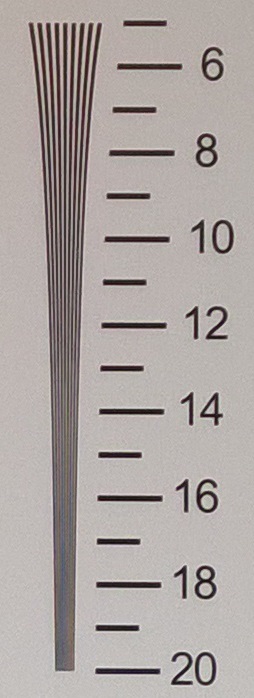
The tangential lines show a similar story, with the Lumia 830 unable to resolve after around the 13 mark. With a 10 MP sensor, I would have hoped to see it resolve at least the same as the iPhone.
Next we will take a look at some controlled scenes.
Controlled Scenes
The Lumia 830 does a good job on a well-lit scenes. The amount of detail is good, and the color balance is very good as well. These shots were taken in full auto, so while it would be possible to correct the Lumia 1020 white balance with the manual controls, most of the time people just leave the camera in auto so it is important for the device to get the right cast.
To stress the camera under poor lighting, we set the light box to 5 lux and leave the flash off. The Lumia 830 does a decent job here again, once again getting the white balance spot on. As compared to the Lumia 1020 photo, there is quite a bit more noise in the final image which is not surprising with the sensor size difference. If you were not going to crop this image it would be very usable.
Outdoor Scenes (Night)
Moving out of the comforts of home, I braved the elements to get some outdoor pictures. The first scene is a park bench which is lit by a low-pressure sodium-vapor light which has a distinctive yellow hue. This scene is dark enough that the image preview on the phone is pretty hard to make out.
The Lumia 830 does a good job with this scene. It keeps some of the yellow cast of the sodium light, but the result is a very usable photo. If you zoom in on it, there is more noise than the 1020 but the overall result is very good.
The picture of the grocery store tells a similar tale. The Lumia 830 gets a better white balance than the Lumia 1020 and the result is a good photo. The Lumia 1020 as always struggles to get the correct white balance when in auto mode even though the resultant picture has much less noise.
Outdoor Scenes (Day)
Moving to daytime, there is generally ample light that even small sensors have no issue getting a reasonable photo.
The Lumia 830 had no issues during daylight with any of the subjects. This picture makes a great comparison with the detail loss as compared to the Lumia 1020. Please ignore the color differences between the photos as the sun ducked behind a cloud, but instead look at the detail of a zoomed in image.
 Lumia 830 (Left) vs Lumia 1020 (right) in Cropped comparison - view at full resolution to see full effect
Lumia 830 (Left) vs Lumia 1020 (right) in Cropped comparison - view at full resolution to see full effect
The Lumia 830 is a good camera for basic point and shoot smartphone photography but it lacks the imaging power of the other PureView phones such as the 930 and 1020. A 1/3.4” sensor and the much lower pixel count removes the ability to do pixel binning to improve the overall result, and it also removes the ability to do lossless zoom.
Another missing feature from the Lumia 830 as compared to the other PureView cameras is the ability to capture in RAW format.
As a still photograph camera, we still need to look at one more feature that can impact camera use – latency.
Capture Latency
Being able to take a photograph quickly can mean the difference between getting a great shot and missing the subject altogether. We have seen a great push in the industry in the last while to improve the focus latency, with some cameras now using phase detection and other tricks to increase the focus speed. The other half of that is the capture latency of taking the photo and saving it so that the camera app is ready to go again. We will start with focus. As with the performance benchmarks, I sampled several phones that may be shopped against the Lumia 830. If you want to check out the 830 against any other device, please visit our benchmark comparison pages in Bench.
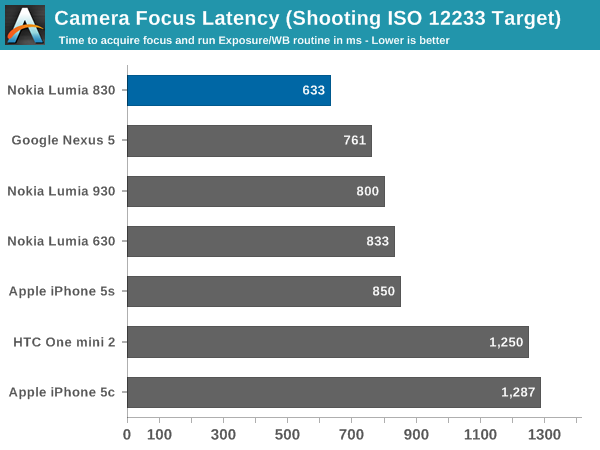
The Lumia 830 is the fastest Lumia I have tested for focus latency, with it occurring in just over 600 ms. While not the outright fastest device for focus we have ever tested, improvement is always welcome. Next up, we will look at the latency to initiate a photo save it to disk.
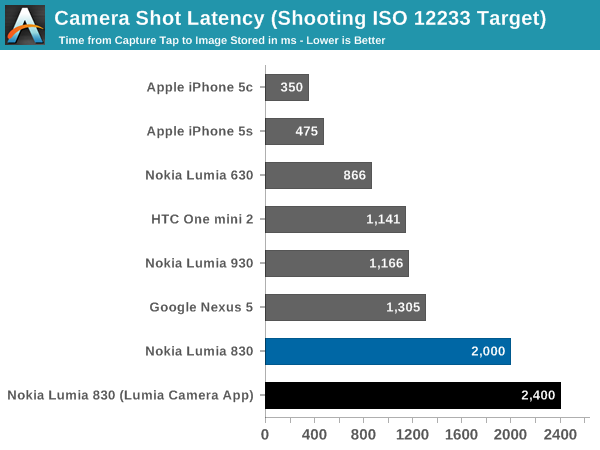
At IFA, Microsoft announced they were going to be launching a new camera app at the end of this year and it cannot come soon enough. The Lumia Camera app is especially slow, with a total capture latency of 2.4 seconds before it is ready for another shot. The default Windows Phone camera app is slightly faster at 2 seconds even. The Lumia 930 outperforms it here which likely means that it is being held back by the slower SoC onboard.
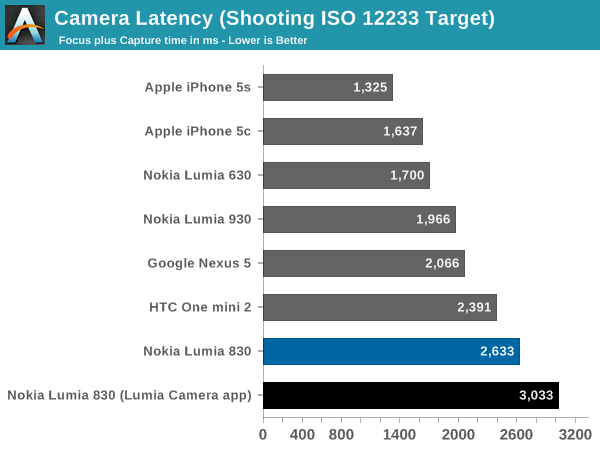
Total latency is the time to focus and the time to capture and save the image. The Lumia 830 is a very slow camera. It is hard to say anymore other than hopefully the new camera app improves this situation.
Video
The 830 has four microphones which allow it to capture video in Dolby Digital surround sound, which is a nice bonus. The video resolution and frame rate options are fairly sparse though, with the only options being 1080p or 720p at 24, 25, or 30 frames per second.
I did two videos with the first one being during the day and the second one at night.
The video during the day was during very high winds (50 km/h+) and with the default low pass filter enabled on the video the amount of wind noise was pretty good.
The night video shows the limits of the sensor quite clearly. OIS helps with the camera shake, but on still photography it allows for an increased exposure time to combat a small sensor. On a video, the sensor gets no such bonus and as such there is quite a bit of noise.


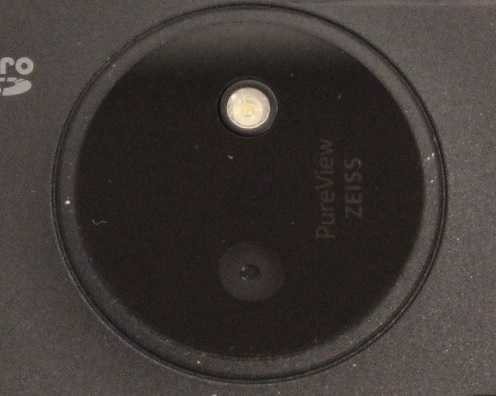
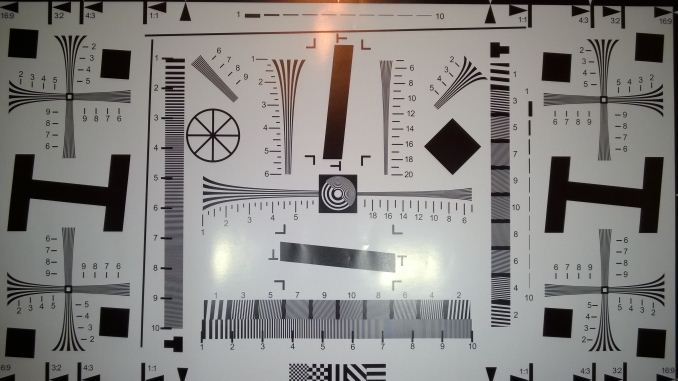


















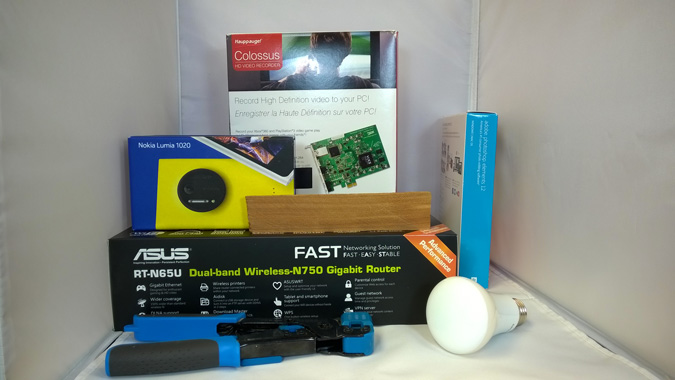


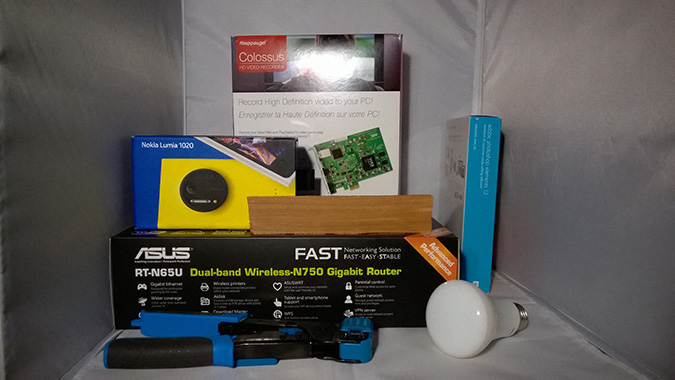


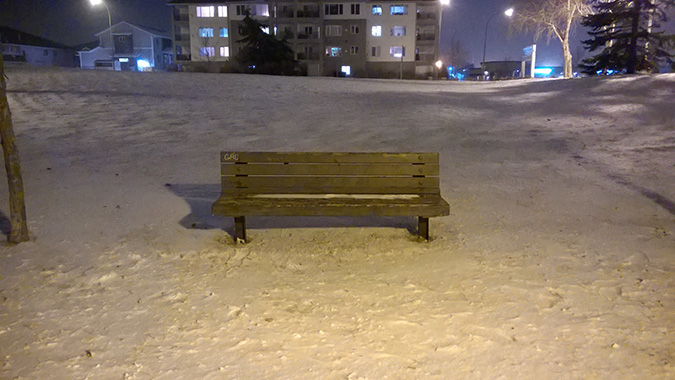


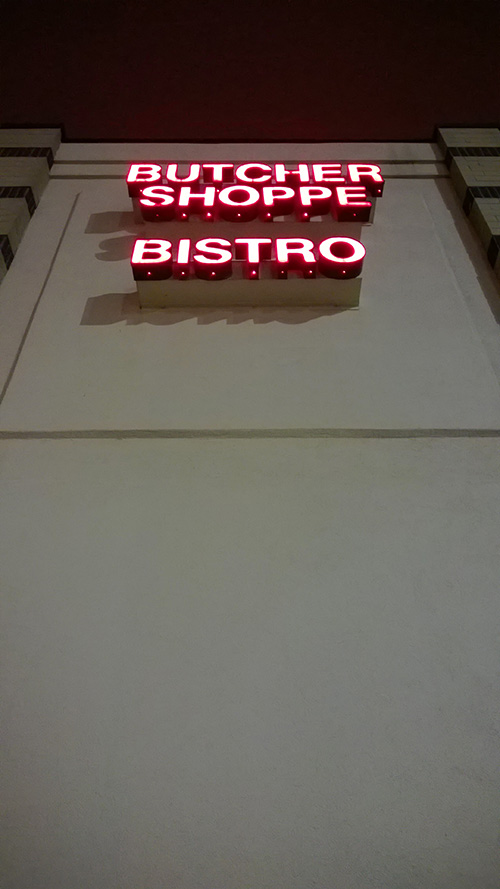















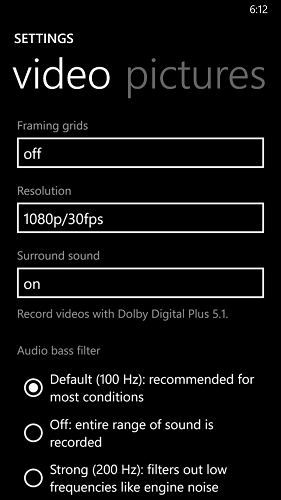








98 Comments
View All Comments
cheshirster - Friday, November 28, 2014 - link
Moto G can barely fight with 630. Definetly not with 735 and 830.CaedenV - Tuesday, November 25, 2014 - link
like others here I have a 2 year old Lumia 920 and am looking for an upgrade, but there are limited options available. When I was essentially running a business out of my cell phone I was looking to upgrade to the 1520 (or better yet the long rumored 1525 what seems to have gone up in smoke), but now that I am a student and have a laptop a normal sized phone sounds much more appealing.I was looking really hard at the Icon/930, but the lack of Glance and SD card support are in fact deal-breakers. I use glance all of the time on my 920 (especially now that weather shows up on Glance... best simple feature ever!), and if I had SD support then I could fit my whole music collection, as well as more pics and vids of the kiddos to show off to friends and family. Plus the fact that it is only available on VZW, and I am not going there and will stick with ATT/T-Mo for service.
So then that leaves the 830. Playing with it in person, it is a great little device, and if you sell off the useless bundled fitbit for ~$80+ then the price is more than reasonable. It is a step down from the Lumia 920... but only a minor step down, and some things (like SD support, much lighter weight and slimmer design, significantly better camera, bigger display/less bezel, etc.).
But at the end of the day it is not a flagship. The processor is slower than the 920 for most of my uses (may be different if you play more games), the screen quality/resolution is lower, the build quality is not as good... it is exactly as advertised: an "affordable flagship" with all of the features, but at lower spec. The other issue is that it is not going to get the 'next gen' features like "Hey Cortana", or the 3D touch tech that MS is working on.
For myself at least, the only issue that my 920 has is that the GPS has lost it's mind and it refuses to narrow my position down closer than a 2 mile radius which makes navigation useless... but everything else on the device works fine and is in great shape. Unless there is some sort of crazy Black Friday deal, I think I am going to stick with the 920 until next summer when the next gen devices hit with Windows 10. It would be nice to have GPS again from time to time, but I would rather muddle through with GPS-less maps which still work and buy one high-end device later rather than a midrange device now and a high-end device in 6 months.
Wolfpup - Tuesday, November 25, 2014 - link
Since Windows Phone like most Android devices normally gets updates from the carriers...which is to say, they don't get updates- I'm wondering if we should all be running Windows Phone in developer mode is it gets timely updates. I have my 928 set like that and it's gotten probably 4 updates since 8.1, BUT it hasn't gotten any updates to the Nokia specific software yet.Still...I assume that means I'm getting security issues fixed.
(For that matter, I have no idea why my Nexus 7 tablet always takes months to get OS updates...)
synaesthetic - Tuesday, November 25, 2014 - link
The reason your N7 takes so long to get updates is because that much time actually passes between Android version updates. Google has placed most of their functionality into Google Apps and the "Google Play Services" app, a move both intended to strengthen their ecosystem and fight device fragmentation.The OS itself only gets updated for major changes to low-level OS components, or when a new mainline version of Android is released.
Wolfpup - Wednesday, January 28, 2015 - link
No, what I mean is that after an Android update is supposedly released, and other Nexus devices are getting updates, my Nexus 7 takes MONTHS to get them. It was supposedly updated in November, for example, and STILL hasn't been updated.Busterjonez - Tuesday, November 25, 2014 - link
I believe that your 2G/3G web browsing battery life is missing the iPhone 6. Since many people don't live in an area where LTE is constantly available, it is suspect to omit this information.My guess is that the battery life for an iPhone 6 2G / 3G browsing session is bad to very bad, and you have left them off the charts to obfuscate this.
Brett Howse - Tuesday, November 25, 2014 - link
I didn't compare the iPhone 6 in any chart since it's not in the same price range. As for 2G/3G for the iPhone 6 in particular, I did not review that device but my suspicious is that it was due to the time crunch for that phone, since battery life testing takes the longest for any of our benchmarks.Busterjonez - Tuesday, November 25, 2014 - link
Fair point about the 6, I hadn't noticed it's absence on the other tests.Why include an iPhone 5s / 5c in the WiFi battery test, but not in the 2G / 3G battery test?
Brett Howse - Tuesday, November 25, 2014 - link
The iPhones are not in bench for the 2G/3G battery life is the only reason they were not included. They were only tested as LTE:http://anandtech.com/bench/PhoneTablet14/989
The iPhone 5 was the last one tested for 2G/3G and it isn't sold anymore so I did not include it in my charts.
TheFlyingSquirrel - Tuesday, November 25, 2014 - link
Looks like a good phone that is priced way above its price range. You can buy a HTC Desire 820 of expansys or Newegg now for around $360-380 about the same price you can find a Lumia 830.I would bet that the Nokia would have a better camera but if you're just looking at numbers the HTC has the 13mp rear camera vs the 10mp Nokia. Has a 8mp front camera vs the .9mp Nokia.
Snapdragon 615 vs the Snapdragon 400. 2GB LPDDR3 vs the 1GB LPDDR2 Nokia. Depending on what floats your boat 5.5" display vs 5" Nokia. Both are 1280x720 16GB storage and microSD support. I think it would be hard on salesmen to pitch coupled with the poorly supported Windows Phone app store.